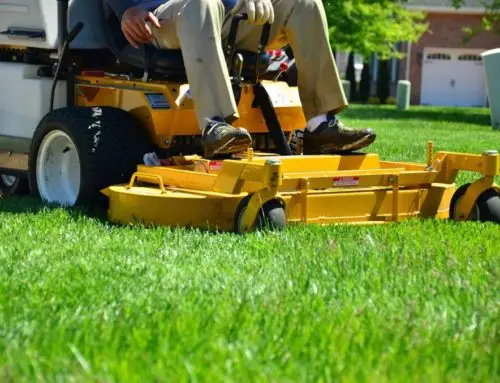For best results, grass seed grows at its fastest pace when you match the type of grass you’re going to plant with the planting season. Seeds germinating time varies from three to twenty-eight days, depending on the grass type, temperature and humidity.
Proper soil aeration before planting the seed also encourages the fastest possible grass growth. Additionally, lower nitrogen, slow-release starter fertilizers, as opposed to high-nitrogen fertilizers that nourish weeds, promote root growth and safe to use on new grass.
Grasses that prefer cool weather should be planted in the spring or fall for the fastest germination time. These varieties include Kentucky bluegrass, ryegrass and creeping bentgrass. Grasses that germinate faster in warmer temperatures should be planted during the summer, and include Bermudagrass, Bahiagrass and Zoysiagrass.
Grass Growing Method:
You can use a tiller to remove any debris from the area such as branches or rocks to cultivate the planting site. You want to level the planting area by raking the soil to even out any high, low, or clumpy spots. Once that has been done, add fertilizer using your spreader.
It is recommended that you use 2 ½ lbs. of fertilizer for every 1,000 square feet of planting area. You then sow the seed using the spreader. It’s best to work in parallel rows from north to south, and sow the rest of the seed from east to west.
Once all of your seed has been sowed, you can use a layer of wheat straw mulch over the seeded area to keep wind and erosion from washing away the seed. After the much has been laid, you should lightly water the grass seed each day, giving it enough water to soak the area, but not too much so that the seed runs off the soil. When you see the new seedlings and grass start to grow, you can lightly rake away the mulch. Avoid harming or removing any new grass seedlings with the rake.
When to Water:
To efficiently water your new lawn, provide enough water to reach the roots without over soaking the area. It’s best to avoid watering during the warmest part of the day or at night to ensure that the lawn is resistant to disease.
It is typically recommended to water your lawn in the early morning before the heat of the day has begun. If you happen to live in a region that has very hot, dry weather, you should water your lawn in the early evening to promote proper water absorption.
Most grass varieties require about ½ to 1 inch of water per week to grow and thrive into a blanket of green. This amount of water means that you should water your lawn several times weekly to reach the recommended amount of moisture. If you want to know if your grass is receiving the right amount of moisture, you can push a soil probe into the ground about 6 inches to see if the lawn is being adequately watered.
New & Existing Lawns:
Getting a new lawn started or reseeding an existing lawn doesn’t have to be hard work or complicated, nor do you have to spend huge amounts of money on professionals or sod. The fact is that you can save money and successfully start a new lawn from seed with a little preparation, quality grass seed ideal for your growing conditions, well-prepared soil and a little patience.
Evergreen Landscapes can help make your lawn look beautiful and maintain it in any season. Contact us today to get started!





